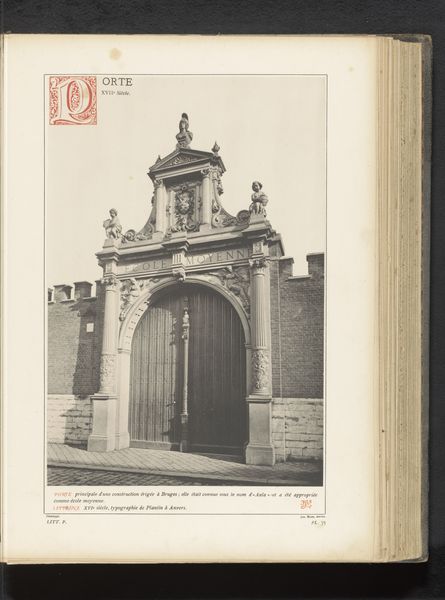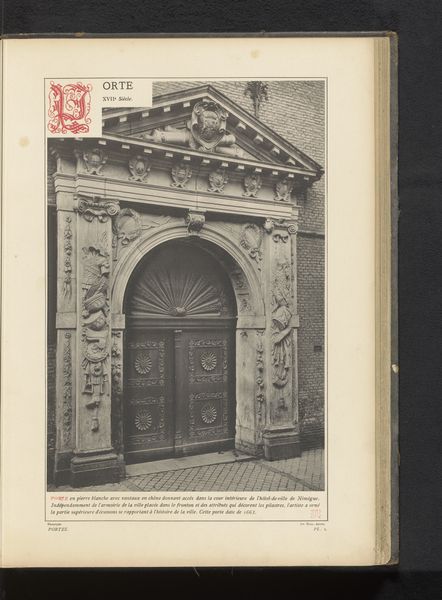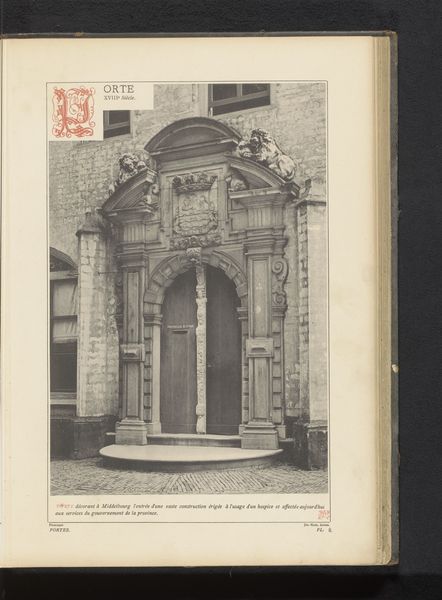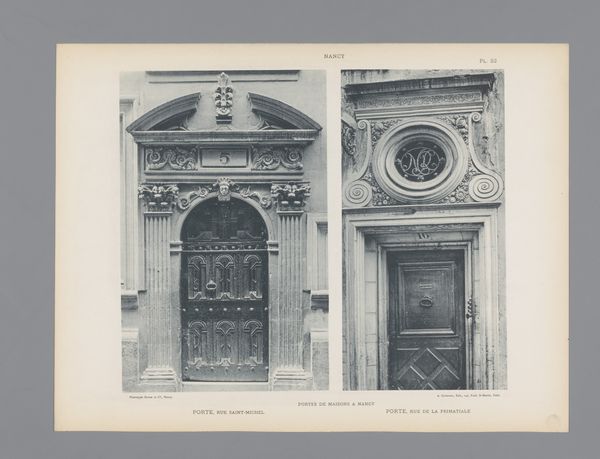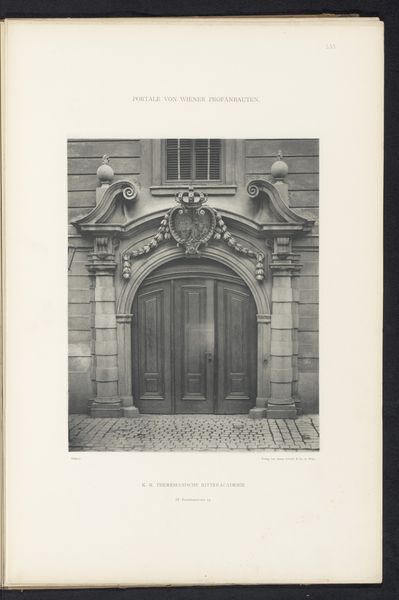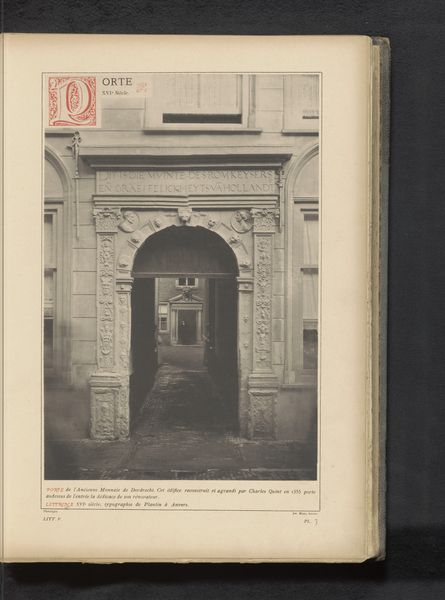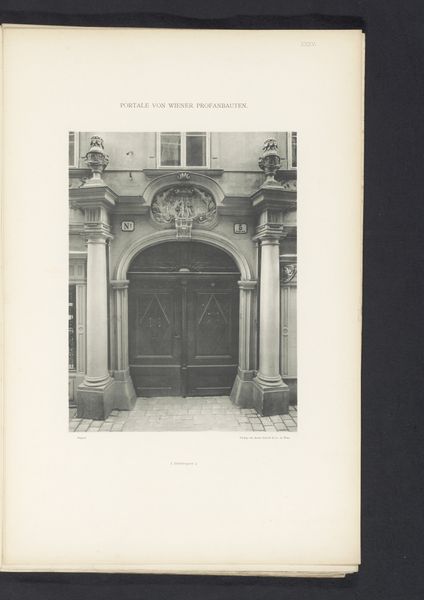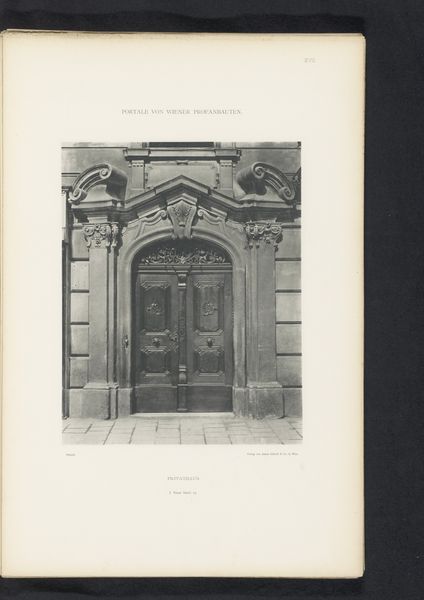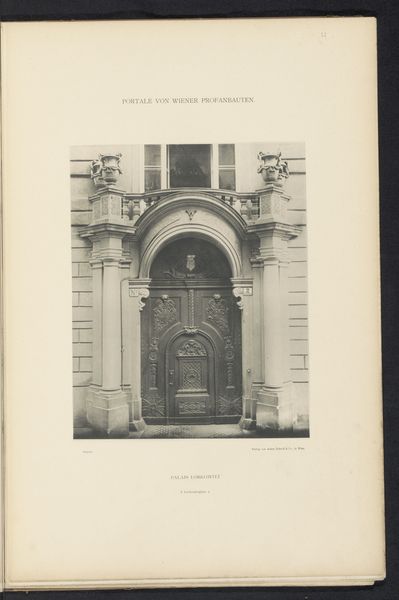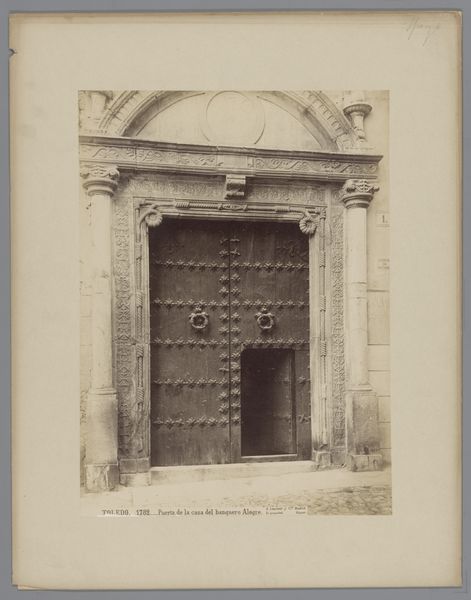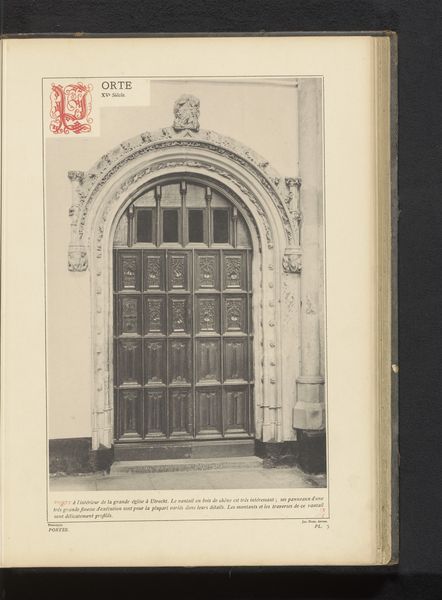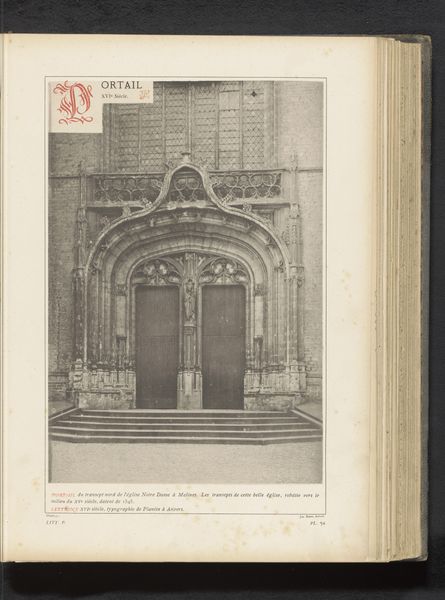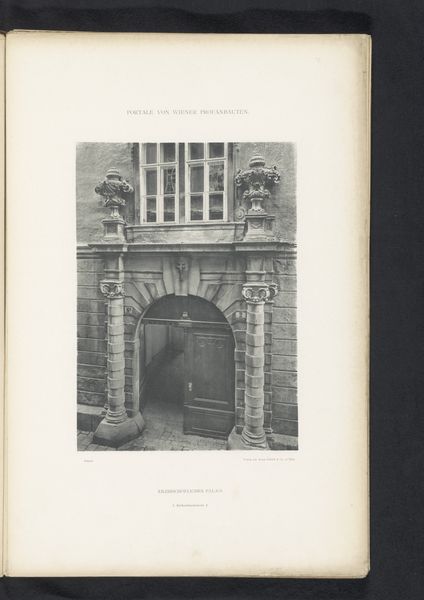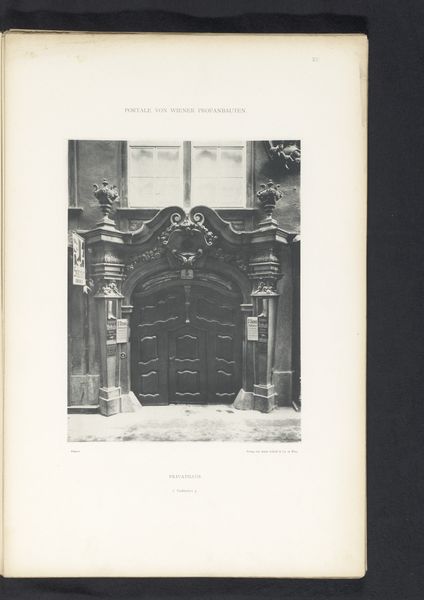
print, photography, architecture
#
medieval
# print
#
landscape
#
photography
#
cityscape
#
architecture
#
realism
Dimensions: height 339 mm, width 229 mm
Copyright: Rijks Museum: Open Domain
Curator: Looking at this remarkable image from before 1881 titled "Deur van huis Den Noodt Gods te Brugge" – Door of the house Den Noodt Gods in Bruges—I am struck by its imposing quality. The arched doorway seems like a portal to another time, another realm. Editor: It’s fascinating. The monochromatic tones create a solemn and serious atmosphere. The focus on the doorway—the means of entry—highlights the literal barriers within 19th-century urban society. How were such doors constructed and what social divisions did they materialize? Curator: Absolutely. When situating this image within its broader historical context, we should consider what the "House of God's Need" represented in Bruges at this time. Perhaps it symbolized shelter and charity, and maybe this imagery provided hope to vulnerable individuals in a patriarchal society—yet the door remains an architectural manifestation of separation. Editor: Exactly. We have to consider the labor involved in building such a structure. Who were the architects and craftspeople? The choice of sturdy materials indicates something not temporary, something supposed to be durable—almost like a status symbol for a particular societal class. What does this choice tell us about social hierarchies? Curator: This door presents questions regarding who can, and who cannot, access this sacred space. Moreover, is this image reflecting realities or shaping public perceptions? How does it influence narratives related to class, gender, and piety in the late 19th century? Editor: These are all valid inquiries. What also strikes me is the door itself, as a meeting point between private and public. It speaks to access to both tangible and intangible needs—security, perhaps spiritual solace, also perhaps the creation and maintenance of exclusive communities, as a site of negotiation and boundary setting. Curator: This examination demonstrates how historical art speaks to contemporary issues and dialogues concerning social justice. These old architectures prompt ongoing discussions about power dynamics, privilege, and societal influence, and this piece encapsulates this dialogue beautifully. Editor: Agreed, it invites us to question not just what we see but what structures uphold that which we cannot yet readily perceive.
Comments
No comments
Be the first to comment and join the conversation on the ultimate creative platform.
